
Below you will find a collection of fact sheets, content essays, and stories from our explorers on board deep-sea canyons expeditions featured on the OceanExplorer.NOAA.gov website.
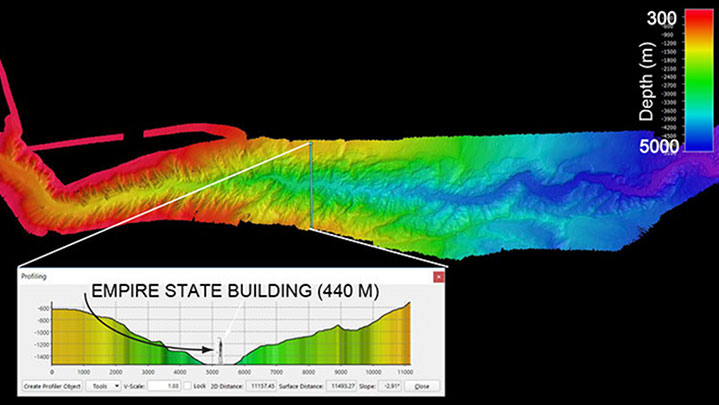
From the Deep Connections 2019: Exploring Atlantic Canyons and Seamounts of the United States and Canada expedition. While different kinds of scientists will tell you submarine canyons are important for different reasons, all agree that they are one of the most important features in the ocean.
Read more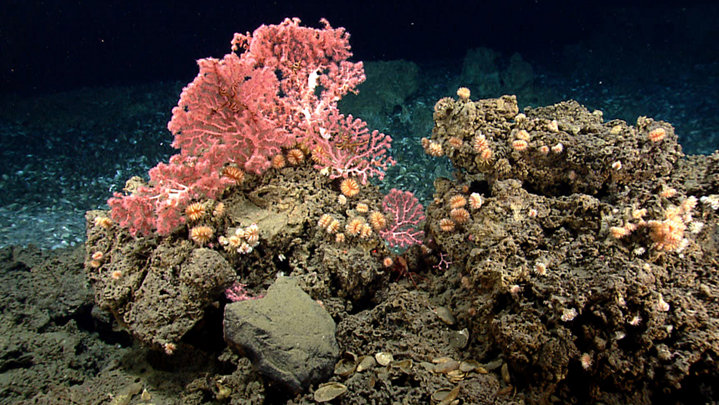
From the Exploring Carolina Canyons expedition. The geological and morphological diversity of deep-sea canyons supports a wide variety of habitats. Some findings suggest that increased habitat diversity in canyons is responsible for enhancing benthic biodiversity and creating biomass hotspots. This essay discusses recent deep-sea canyon exploration all along the eastern United States.
Read more
From the Deep Connections 2019 expedition. Submarine canyons are scattered along the coasts of North America and elsewhere and can provide patches of hard substrate formed by the canyon walls that expose hard surfaces (that is, they are not buried under sediment) on which animals can attach. When scientists consider connectivity in canyons and elsewhere in the ocean, they are asking about how – and to what degree – isolated or widely dispersed populations are connected to one another.
Read more
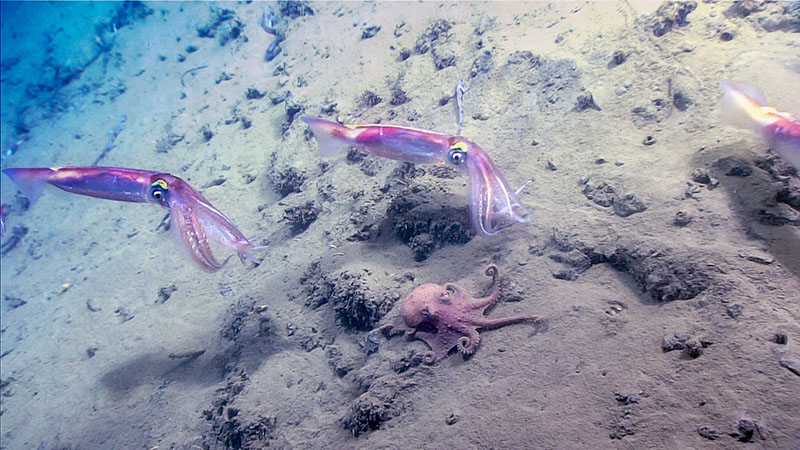
From the DEEP SEARCH 2019 Expedition. Carved into the shelf from North Carolina through Canada are 40 undersea canyons that may be 10 to 100 miles long, with some deeper than the Grand Canyon. The complex topography and geology in canyons provide many habitat types including steep walls, rocky outcrops, and ledges where sensitive deep-sea coral communities often live, as well as sedimented areas where additional fish and invertebrate species thrive.
Read more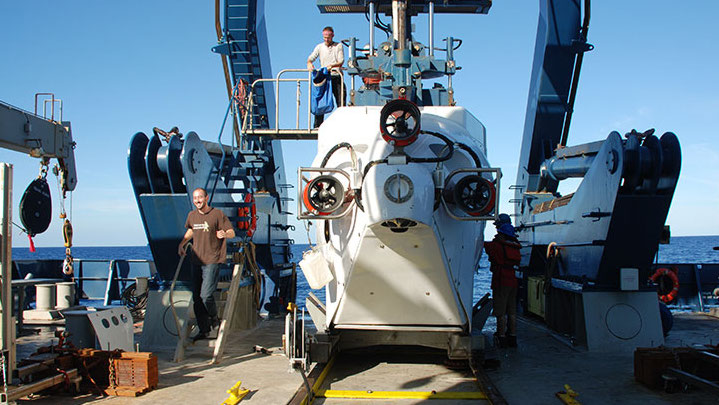
From the DEEP SEARCH 2018 expedition. Read a first-hand experience from a young scientist as he explores the seafloor of Pamlico Canyon. Here he finds an incredible diversity of fishes; sea stars with their mouths facing upwards and their arms splayed out in the water column like a wildflower’s petals; and a sea spider, nearly 20 centimeters across.
Read more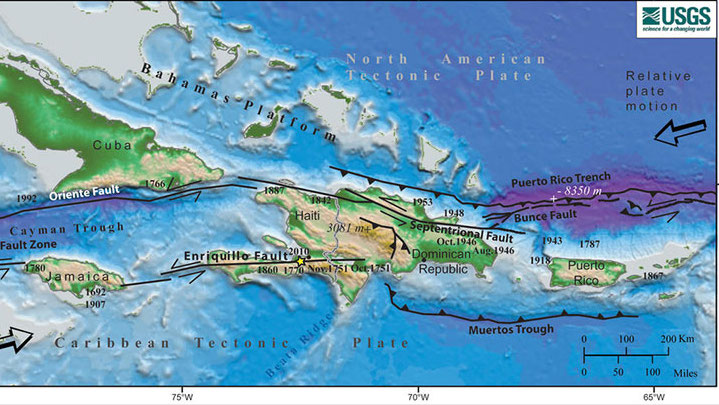
From the Exploring Deep-sea Habitats off Puerto Rico & the U.S. Virgin Islands expedition. Puerto Rico is located on an active plate boundary zone between the North American Plate and the northeast corner of the Caribbean Plate. The Puerto Rico Trench lies to the north of Puerto Rico and is the deepest part of the Atlantic Ocean, with water depths exceeding 8,300 meters (5.2 miles). Its depth is comparable to the deep trenches in the Pacific Ocean.
Read more
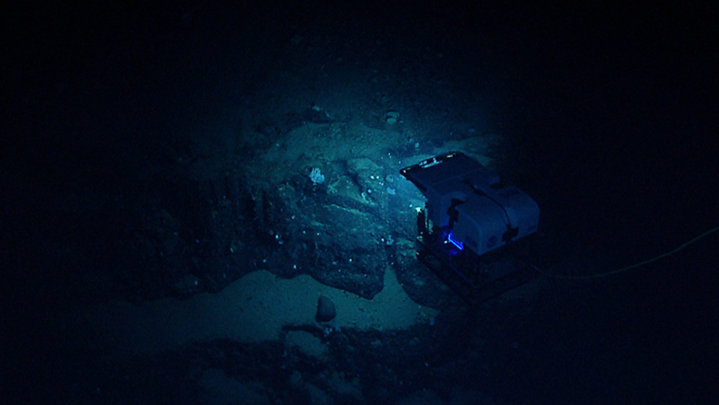
From the Our Deepwater Backyard: Exploring Atlantic Canyons and Seamounts 2014 expedition. “Deep below the smooth surface of the ocean hides a complex and dramatic topography, a still largely unexplored, underwater landscape as stunning as that seen by Lewis and Clark in the west.” This essay discusses the value of exploring the deep-sea canyons and seamounts of the eastern Atlantic.
Read more
From the Our Deepwater Backyard: Exploring Atlantic Canyons and Seamounts 2014 expedition. “Where species occur is often a funny thing in biology, likely dependent on a number of factors that make those places suitable for a specific species.” Here, one of the world’s few specialists who work on the diversity and evolution of sea stars puts together what he knows from preserved specimens and decades of study with what has been recently found in the North Atlantic Canyons during expeditions on NOAA Ship Okeanos Explorer.
Read more
From the Northeast U.S. Canyons Expedition 2013. Submarine canyons are found throughout the world, representing complex seafloor features that link the upper continental shelf to the abyssal plain. They punctuate the margin by incising the shelf, creating scenic seascapes reminiscent of their terrestrial counterparts.
Read more
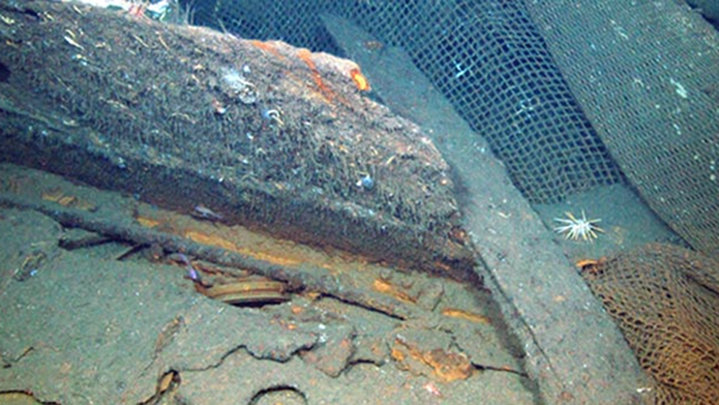
From the Deepwater Canyons 2013: Pathways to the Abyss expedition. The mid-Atlantic outer continental shelf intersects with some of the most historically significant waters in the United States and the historical and archaeological importance of the region is substantial. This essay reviews archaeological findings in this area with a long and rich history connected to exploration, warfare, commerce, fishing, and recreation.
Read more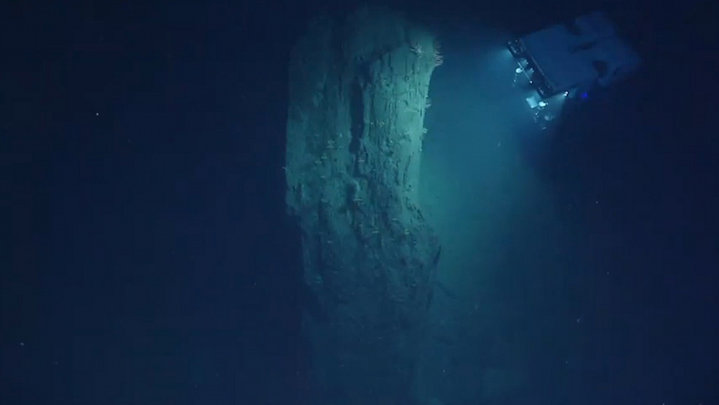
From the Northeast U.S. Canyons Expedition 2013. During the long summer days of July and August, NOAA Ship Okeanos Explorer, remotely operated vehicle Deep Discoverer, and a cadre of scientists and technicians both aboard ship and ashore had the rare opportunity to visit more than 10 submarine canyons along the U.S. Atlantic continental slope during the Northeast U.S. Canyons cruise. This essay describes what they found.
Read more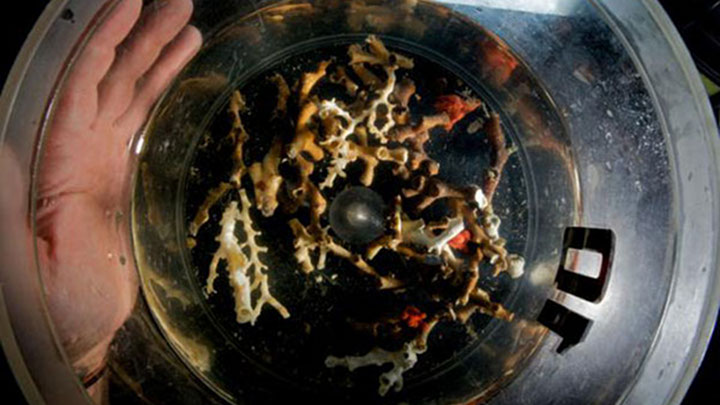
From the Atlantic Canyons Undersea Mapping 2012 Expeditions. Deepwater canyons are prominent features off the coast of the eastern United States, beginning at the edge of the continental shelf and with some extending down the continental slope to the abyssal plain. These canyons tend to be biodiversity “hotspots” compared to adjacent habitats and often support higher biomass of organisms than other deep-sea habitats, making study of these areas important to our understanding of the ocean.
Read more
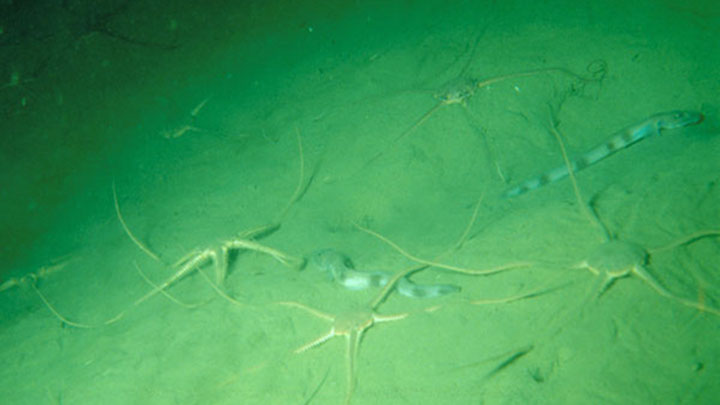
From the Deepwater Canyons 2012: Pathways to the Abyss expedition. In this essay, learn more about the submarine canyons that are dominant features of the outer continental shelf and slope of the U.S. East coast from Cape Hatteras to the Gulf of Maine. There are 13 major canyons in the Middle Atlantic Bight region, and minor canyons are abundant.
Read moreThe above items are only a selection of the educational materials highlighting deep-sea canyons on our website.
View More